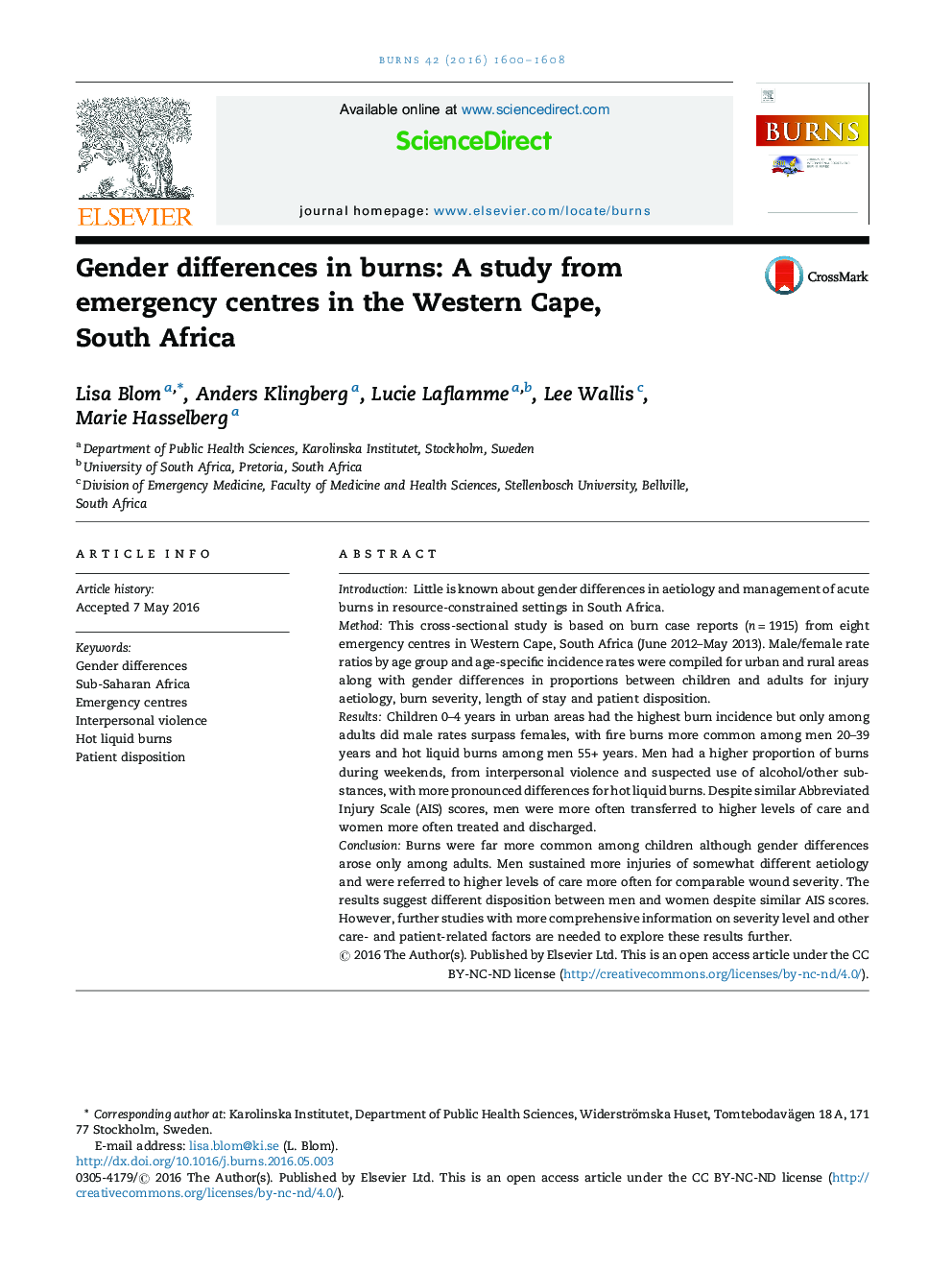| Article ID | Journal | Published Year | Pages | File Type |
|---|---|---|---|---|
| 5636259 | Burns | 2016 | 9 Pages |
â¢Children have higher burn incidence than adults, but similar gender distribution.â¢Gender differences are observed in adults and these vary with mechanism.â¢Gender differences are more noticeable for hot liquid burns.â¢Adult men have higher share of violence-related burns and suspected alcohol use.â¢Despite similar burn severity, more adult men are transferred for care.
IntroductionLittle is known about gender differences in aetiology and management of acute burns in resource-constrained settings in South Africa.MethodThis cross-sectional study is based on burn case reports (n = 1915) from eight emergency centres in Western Cape, South Africa (June 2012-May 2013). Male/female rate ratios by age group and age-specific incidence rates were compiled for urban and rural areas along with gender differences in proportions between children and adults for injury aetiology, burn severity, length of stay and patient disposition.ResultsChildren 0-4 years in urban areas had the highest burn incidence but only among adults did male rates surpass females, with fire burns more common among men 20-39 years and hot liquid burns among men 55+ years. Men had a higher proportion of burns during weekends, from interpersonal violence and suspected use of alcohol/other substances, with more pronounced differences for hot liquid burns. Despite similar Abbreviated Injury Scale (AIS) scores, men were more often transferred to higher levels of care and women more often treated and discharged.ConclusionBurns were far more common among children although gender differences arose only among adults. Men sustained more injuries of somewhat different aetiology and were referred to higher levels of care more often for comparable wound severity. The results suggest different disposition between men and women despite similar AIS scores. However, further studies with more comprehensive information on severity level and other care- and patient-related factors are needed to explore these results further.
